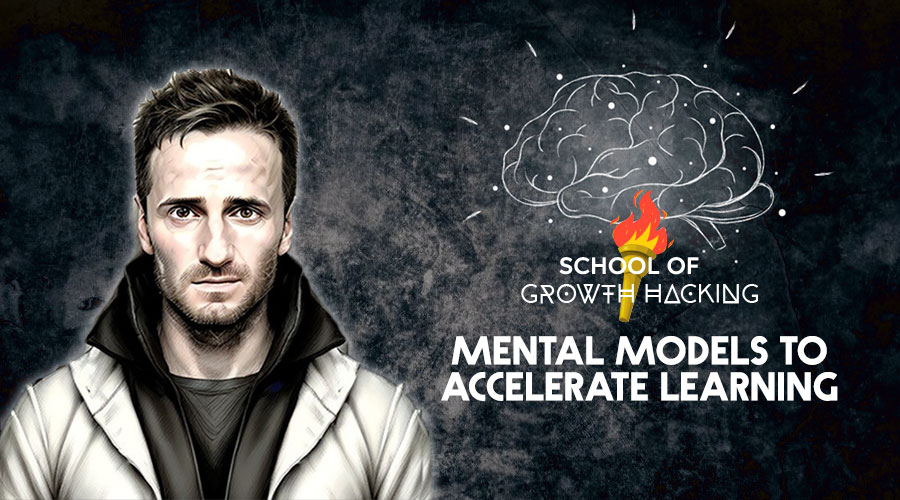When we gain an understanding of the underlying mental models that govern the learning process, we are able to unravel the secrets of a complex puzzle.
The value of mental models is that, like heuristics, they provide mental shortcuts that ease the cognitive load that our minds have to carry. They also provide cues to help us understand larger concepts and “big pictures” as a whole.
In this article, we discuss 10 unique mental models for learning. Each one offers a unique perspective on how our minds grapple with challenges, retain information, and navigate the vast landscape of knowledge acquisition.
1. Problem Solving as Search: The concept introduced by Herbert Simon and Alan Newell presents problem-solving as a quest through a metaphorical maze. This mental model posits that when faced with unfamiliar problems, individuals engage in a systematic search through a problem space. Analogous to navigating a maze or solving a Rubik’s Cube, understanding this process sheds light on the intricate nature of problem-solving and emphasizes the importance of acquiring patterns and methods to streamline this cognitive search.
2. Memory Strengthens by Retrieval: Testing one’s knowledge emerges not merely as an assessment tool but as a powerful mechanism to enhance memory. The mental model suggests that the act of retrieval, recalling information from memory, is more potent in reinforcing knowledge than repeated exposure. This insight not only underscores the efficacy of testing in learning but also aligns with the brain’s natural inclination to prioritize remembering information deemed valuable through successful retrieval.
3. Exponential Growth of Knowledge: Knowledge, it appears, begets knowledge. This mental model asserts that the amount of information retained from a text is intricately linked to one’s prior knowledge of the topic. The exponential growth of knowledge unfolds as learners integrate new information into their existing cognitive frameworks. This integration, akin to adding hooks to a wall, provides a foundation for efficient recall, emphasizing the importance of a well-established knowledge base in facilitating further learning.
4. Creativity as Copying: Demystifying creativity, this mental model proposes that innovation is not a miraculous eruption but rather an evolutionary process. New ideas are portrayed as mutations of existing ones, and creativity emerges through the recombination and adaptation of familiar concepts. Even in the realm of fine arts, the significance of copying and an intimate connection with tradition is underscored, challenging common misconceptions about the nature of creative endeavors.
5. Specificity of Skills and Transfer: The specificity of skills becomes apparent as this mental model illuminates the nuances of knowledge transfer. Skills are shown to be task-specific, with transferability more likely to occur between similar tasks. The breadth of knowledge creates generality, emphasizing the importance of mastering multiple ideas to establish a broad foundation for learning. Education’s role in enhancing intelligence is explored, highlighting the correlation between education, knowledge breadth, and intelligence improvement.
6. Limited Mental Bandwidth: In the intricate symphony of cognition, mental bandwidth emerges as a limiting factor. Psychologist George Miller’s assertion that we can only hold a few things in mind at a time sets the stage for understanding the bottleneck through which all learning must flow. Cognitive load theory is introduced, offering insights into optimizing learning by considering mental bandwidth constraints. Efficiency in learning, it seems, demands a strategic allocation of mental resources.
7. Success as a Teacher: Success, rather than failure, takes center stage in this mental model as an effective teacher. The expansive problem spaces that learners encounter necessitate a focus on what works, streamlining possibilities and fostering a more efficient learning process. The notion of maintaining an 85 percent success rate emerges as a guiding principle, encouraging a delicate balance between challenge and attainable progress.
8. Reasoning through Examples: Logical reasoning, a perennial puzzle, finds resolution through the mental model of constructing mental models. The concept proposed by Philip Johnson Laird suggests that reasoning often involves creating mental representations of situations. Learning through examples is highlighted as a faster and more effective method, with cautionary notes on the potential pitfalls of making broad inferences based on limited examples.
9. Automation of Skills: As skills become automated through practice, this mental model sheds light on the unconscious competence that emerges. The benefits of automation, such as reduced conscious awareness and utilization of working memory, are explored. However, the drawbacks, including the difficulty in teaching automated skills and the resistance to conscious control, caution against excessive reliance on automaticity, emphasizing the need for continuous challenges to spur improvement.
10. Relearning and Forgetting: Inevitably, the cognitive landscape is marked by the ebb and flow of memory. Forgetting, identified by Ebbinghaus as an unavoidable fate, is examined through the lens of relearning. While forgetting poses a challenge, the mental model asserts that relearning is a potent antidote, often faster than the initial learning process. Insights from connectionist models inspired by neural networks provide further depth to the understanding of memory thresholds and the efficacy of relearning.
Conclusion: These ten mental models offer us a compass through the intricate pathways of our minds, guiding us through the complexities of problem-solving, memory enhancement, knowledge acquisition, and skill automation. Embracing these insights can empower learners to approach education with a deeper understanding of the cognitive processes at play, fostering a more effective and enriching learning experience.





